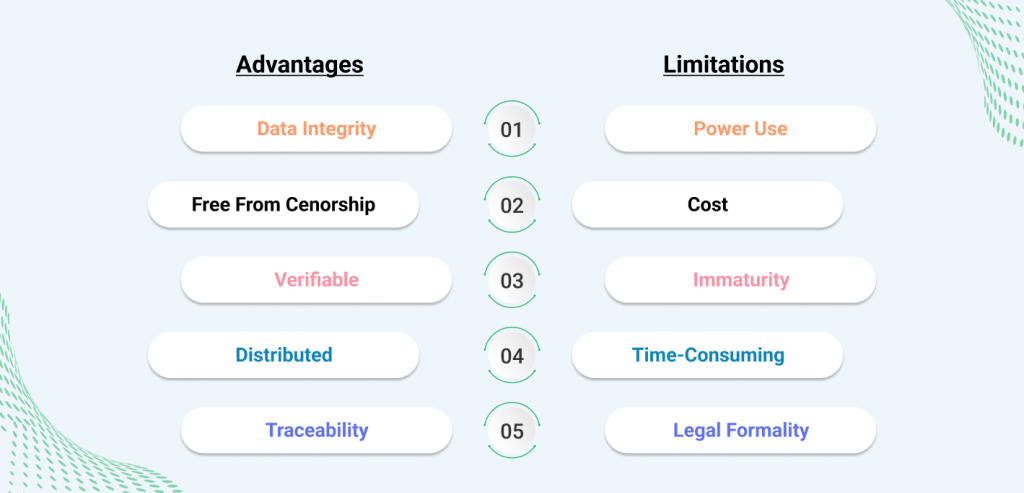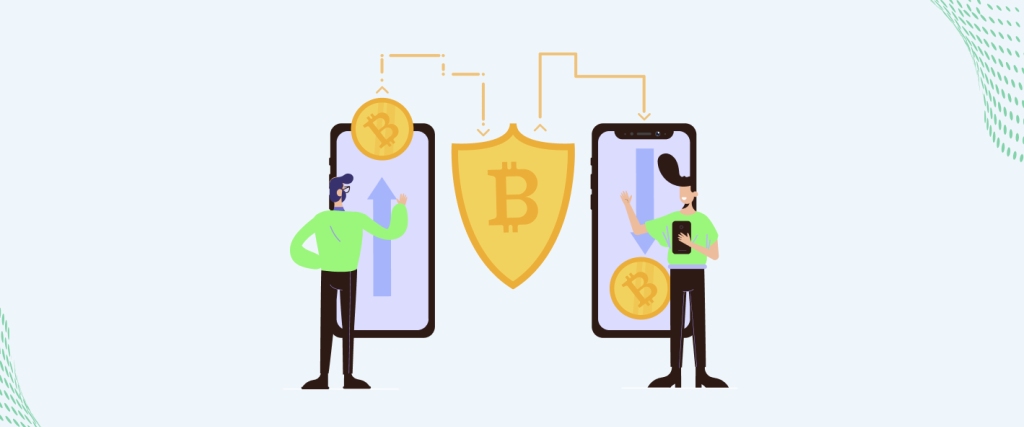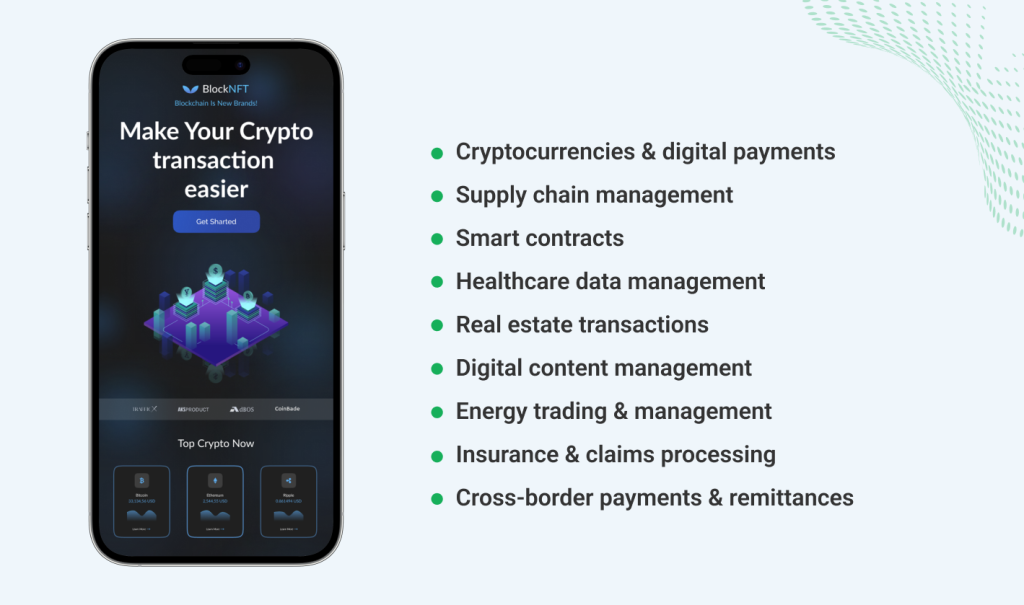In 2021, global spending on blockchain solutions was 6.6 billion dollars. Forecasts suggest that spending on blockchain solutions will continue to grow in the coming years, reaching almost 19 billion U.S. dollars by 2024. Are you a blockchain enthusiast, who is looking to develop a blockchain app? then, welcome to our comprehensive guide to blockchain application development, where we will take you on a journey from concept to reality in the rapidly evolving world of blockchain technology.
Blockchain is no longer just a buzzword; it has become a transformative force across industries, promising increased security, transparency, and efficiency. Whether you are a developer looking to harness the power of blockchain or a business leader exploring potential use cases, this guide is your roadmap to navigate the complexities of blockchain application development.
In this guide, we will demystify the fundamentals of blockchain technology and explain how it works at its core. We will dive into the different types of blockchains and their applications, highlighting real-world examples of successful use cases. From understanding smart contracts to exploring various development frameworks and tools, we will equip you with the knowledge and resources to turn your blockchain concepts into tangible applications.
Join us as we unlock the potential of blockchain technology, empower innovation, and bring your ideas to life. Let’s embark on this transformative journey together.
Understanding Blockchain Technology
Blockchain, at its core, is a decentralized, immutable, and transparent digital ledger that records transactions across multiple computers. It eliminates the need for intermediaries by allowing participants to verify and validate transactions directly, creating a trustless environment.
At the heart of blockchain technology are blocks, each containing a list of transactions. These blocks are linked together in a chronological chain, hence the name blockchain. The decentralized nature of blockchain ensures that no single entity has control over the entire network, making it resistant to tampering and fraud.
Blockchain technology is powered by consensus algorithms, which determine how transactions are validated and added to the ledger. The most common consensus algorithm is Proof of Work (PoW), used by Bitcoin, where participants solve complex mathematical puzzles to validate transactions.
The Advantages Of Blockchain Application Development

Blockchain application development offers several advantages that make it an attractive option for businesses across industries. Firstly, blockchain provides enhanced security through its decentralized architecture. By distributing data across multiple nodes, it becomes extremely difficult for hackers to compromise the integrity of the system.
Secondly, blockchain offers transparency and immutability. Once a transaction is recorded on the blockchain, it cannot be altered or deleted, ensuring a permanent and auditable record. This level of transparency instils trust among participants and eliminates the need for intermediaries.
Thirdly, blockchain enables efficient and cost-effective transactions. By removing intermediaries and automating processes through smart contracts, businesses can streamline operations, reduce costs, and improve efficiency. This has significant implications for industries such as supply chain management, finance, and healthcare.
Key Considerations For Blockchain Application Development
Before diving into blockchain application development, it is essential to consider a few key factors. Firstly, you need to identify the problem you want to solve or the value you want to create with blockchain technology. Understanding the specific use case will help you design a tailored solution.
Next, you need to determine the scalability requirements of your application. Blockchain, especially public blockchains like Bitcoin and Ethereum, can be slow and resource-intensive. If your application requires high transaction throughput, you might consider exploring alternative blockchain platforms or implementing layer 2 solutions.
Another crucial consideration is the governance model of the blockchain platform. Public blockchains are governed by a decentralized network of participants, while private blockchains have a more centralized governance structure. Understanding the governance model will impact the decision-making process during development.
Planning & Scoping The Blockchain Application
Once you have a clear understanding of the problem you want to solve and the requirements of your application, the next step is planning and scoping the project. This involves defining the features and functionalities of the application, as well as mapping out the user experience and interface.
During the planning phase, it is essential to involve key stakeholders and subject matter experts to ensure that the application meets the desired objectives. This collaborative approach will result in a more effective and user-friendly blockchain application
Additionally, you should consider the legal and regulatory implications of your blockchain application. Depending on the industry and use case, there might be specific regulations and compliance requirements that need to be considered during development.
Choosing The Right Blockchain Platform For Development

Choosing the right blockchain platform is a critical decision in the development process. Blockchain platforms offer a variety of features and capabilities, making it essential to choose the right platform for your specific needs. Ethereum, EOS, and Hyperledger are just a few of the many platforms available, each with its own strengths and weaknesses. The choice depends on factors such as scalability requirements, governance model, and development resources.
Public blockchains like Ethereum and Bitcoin offer a high level of security and decentralization but can be slower and more expensive to operate. Private blockchains, on the other hand, provide more control and scalability but sacrifice some of the decentralized nature of blockchain.
Another consideration is the programming language and development tools supported by the blockchain platform. Solidity is the most commonly used programming language for Ethereum smart contracts, while other platforms might support different languages such as JavaScript or Go.
Developing & Testing The Blockchain Application
Once you have chosen the blockchain platform, it’s time to start developing the application. This involves writing smart contracts, which are self-executing contracts with the terms of the agreement directly written into the code. Smart contracts automate processes and enable trustless interactions on the blockchain.
During the development phase, it is crucial to follow best practices for security and code quality. Smart contracts are immutable once deployed, so any bugs or vulnerabilities can have serious consequences. Thorough testing and code reviews are essential to ensure the integrity and security of the application.
Apart from unit testing, it is also important to conduct integration testing to ensure that the blockchain application interacts correctly with other components and systems. This includes testing the integration with existing databases, APIs, and user interfaces.
Implementing Security Measures In Blockchain Application Development
Security is paramount in blockchain application development. The decentralized nature of blockchain provides inherent security, but additional measures need to be implemented to protect against potential vulnerabilities and attacks.
One important aspect is securing private keys and user identities. Private keys are used to sign transactions and prove ownership of assets on the blockchain. It is crucial to store private keys securely and implement multi-factor authentication to prevent unauthorized access.
Another security measure is implementing access controls and permission levels. Not all participants in a blockchain network should have the same level of access and authority. Role-based access controls and permissioned blockchains can ensure that only authorized participants can perform certain actions.
Additionally, regular security audits and vulnerability assessments should be conducted to identify and mitigate potential risks. This proactive approach can help prevent security breaches and ensure the robustness of the blockchain application.
Integrating The Blockchain Application With Existing Systems
In many cases, blockchain applications need to interact with existing systems and databases. This integration can be a complex process, as it requires seamless communication between different technologies and platforms.
One approach is to use APIs (Application Programming Interfaces) to connect the blockchain application with existing systems. APIs allow different software applications to communicate and exchange data in a standardized way. By designing well-defined APIs, you can ensure smooth integration and interoperability.
Another consideration is data migration and synchronization. If you are transitioning from a traditional centralized system to a blockchain-based solution, you need to carefully plan and execute the migration of data. This includes ensuring data consistency and integrity during the transition.
Deploying & Maintaining The App
Once the development and testing phases are complete, it’s time to deploy the blockchain application. The deployment process depends on the chosen blockchain platform and infrastructure. Public blockchains typically require deploying smart contracts to the mainnet, while private blockchains can be deployed on internal infrastructure. Check out the difference between Public blockchains and private blockchains here.
After deployment, it is important to monitor the performance and stability of the blockchain application. Regular monitoring and maintenance ensure that the application continues to function optimally and any issues are promptly addressed.
Additionally, as blockchain technology evolves, it is important to stay updated with the latest developments and upgrades. Blockchain platforms often release new versions and features that can enhance the functionality and security of the application. Keeping the application up to date will ensure its longevity and effectiveness.
Top Blockchain Use Cases

Blockchain technology is transforming industries with its unique capabilities for transparency, security, and efficiency. Here are some of the most promising blockchain use cases:
- Cryptocurrencies and digital payments: Blockchain enables decentralized and secure digital payment systems, without the need for intermediaries.
- Supply chain management: Blockchain provides real-time visibility and traceability of products, reducing fraud and ensuring authenticity.
- Smart contracts: Self-executing contracts automate processes and reduce the need for intermediaries, across industries from real estate to finance.
- Identity verification and management: Blockchain can create secure and tamper-proof digital identities, simplifying identity verification and reducing identity theft.
- Healthcare data management: Blockchain enhances the security and privacy of patient data, enabling secure sharing of medical records while maintaining patient control.
- Voting systems: Blockchain-based voting systems can improve transparency and security, making tampering and fraud more difficult.
- Intellectual property protection: Blockchain can provide immutable records of intellectual property rights, reducing copyright infringement and counterfeiting.
- Real estate transactions: Blockchain can simplify property transactions by reducing paperwork, automating processes, and ensuring transparent ownership records.
- Supply chain finance: Blockchain-based platforms can enable more efficient financing along supply chains, by providing real-time visibility into transactions and assets.
- Digital content management: Artists, musicians, and content creators can use blockchain to authenticate and monetize their creations directly, eliminating intermediaries.
- Energy trading and management: Blockchain facilitates peer-to-peer energy trading and ensures transparency in energy production and distribution.
- Insurance and claims processing: Blockchain can simplify claims processing by automating verification and reducing fraudulent claims.
- Cross-border payments and remittances: Blockchain enables faster and cheaper cross-border payments by eliminating intermediaries and reducing currency conversion fees.
- Anti-counterfeiting: Brands can use blockchain to track the origin and authenticity of their products, reducing counterfeit goods.
- Charitable donations: Blockchain can provide transparency and accountability in charitable donations by tracking the flow of funds and ensuring they reach their intended recipients.
- Legal contracts and notarization: Blockchain can be used for creating and storing legally binding contracts, as well as for providing a digital notarization service.
- Agricultural supply chains: Blockchain enhances transparency and accountability in agricultural supply chains by tracking the origin and journey of products from farm to table.
- Gaming and virtual assets: Blockchain-based platforms enable the ownership, trading, and management of in-game items, characters, and virtual assets.
- Aircraft maintenance and parts tracking: Blockchain can enhance the traceability and maintenance records of aircraft parts, improving safety and compliance.
- Government services: Blockchain can streamline government services such as identity issuance, tax collection, and land registration, reducing bureaucracy and corruption.
Final Thoughts
Blockchain application development is an exciting and rapidly evolving field with immense potential. As blockchain technology becomes more mainstream, we can expect to see increased adoption and innovation across industries.
In this comprehensive guide, we have explored the fundamentals of blockchain technology, discussed the advantages of blockchain application development, and provided key considerations for successful development. We have also covered planning, choosing the right blockchain platform, development and testing, security measures, integration with existing systems, and deployment and maintenance.
By following the principles and best practices outlined in this guide, you will be well-equipped to navigate the complexities of blockchain application development and turn your concepts into reality. Embrace the transformative power of blockchain technology and unlock a world of possibilities for your business.
Choose Aipxperts As Your Blockchain App Development Partner!
Building blockchain applications is a challenging task that requires a deep understanding of the technology and programming languages involved. It is also important to be patient and persistent and to leverage the many resources available to help you get started. But with the right tech partner, it can become a hassle-free process. We at Aipxpert are committed to understanding your ideas and turning them into successful products. Connect with us today for a free consultation.
The future is blockchain, and the time to start building is now. Let’s embark on this transformative journey together.
Blockchain Application Development | Hire experienced developers to develop blockchain apps from Aipxperts. Contact us for project estimates and enjoy a 15-day risk-free trial period.











